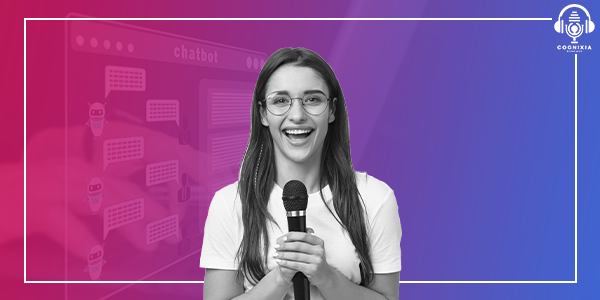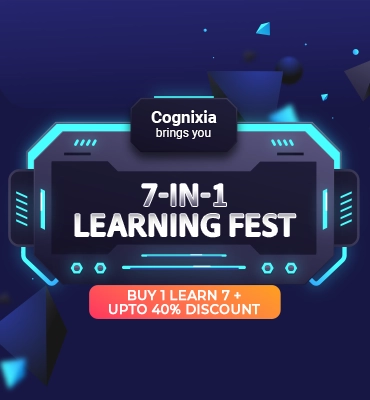Hello tech enthusiasts, and welcome back to another electrifying episode of our technology deep-dive podcast! Every week, we bring you the most cutting-edge developments that are reshaping our digital landscape, and today we have something absolutely extraordinary lined up for you!
So, grab your favorite beverage, settle into your listening nook, and prepare to journey into the revolutionary world of artificial intelligence that’s about to change everything you thought you knew about AI capabilities. We are talking about OpenAI’s most anticipated release yet – GPT-5 – and how this groundbreaking model is set to redefine the boundaries between human and artificial intelligence!
Picture this: you are interacting with an AI that doesn’t just understand your words, but truly comprehends context, remembers your entire conversation history, and can reason through complex problems with the sophistication of a brilliant human colleague. An AI that can seamlessly switch between creating stunning visuals, writing code, analyzing data, and engaging in philosophical discussions without missing a beat. Well, that future isn’t a distant dream anymore – it is arriving this August, and the implications are absolutely staggering!
Today, we are unpacking everything you need to know about GPT-5’s imminent launch, exploring the revolutionary features that will make previous AI models look like calculators in comparison, and discovering why industry experts are calling this release the most significant leap in artificial intelligence since the dawn of machine learning itself. Trust us, by the end of this episode, you will understand why GPT-5 isn’t just another AI upgrade – it is the beginning of a new era in human-computer interaction!
Let us start by demystifying what makes GPT-5 such a monumental advancement, because despite all the AI hype we have experienced over the past few years, this release represents something genuinely transformative. OpenAI is expected to release GPT-5 in August 2025, with CEO Sam Altman describing its capabilities as creating “a weird feeling” even for him – and coming from the person who has seen every iteration of GPT development, that is saying something extraordinary!
At its core, GPT-5 represents the evolution from impressive language processing to true artificial reasoning. Think of the difference between a skilled translator who can convert words between languages and a cultural ambassador who understands not just what you are saying, but why you are saying it, what you might need next, and how to help you achieve your goals most effectively.
GPT-5 is expected to bring major upgrades in reasoning, memory, and multimodal input, with significant improvements in reducing hallucinations and structured problem-solving. This isn’t just about generating better text – it is about creating an AI companion that can think through complex scenarios, maintain context across extended interactions, and provide solutions that demonstrate genuine understanding rather than sophisticated pattern matching.
What makes this moment particularly exciting is that we’re witnessing the culmination of years of research and development in artificial intelligence. To truly appreciate GPT-5’s significance, let’s take a quick journey through the fascinating evolution of the GPT family, because understanding this history helps us grasp just how revolutionary this next step really is.
The GPT story began with GPT-1 in 2018, a model that could generate coherent text but was limited in scope and capabilities. GPT-2, released in 2019, was so impressive that OpenAI initially withheld its full release due to concerns about potential misuse – a decision that seems quaint compared to today’s AI landscape.
Then came GPT-3 in 2020, the model that truly captured the world’s imagination with its ability to write poetry, code, and essays that often felt indistinguishable from human creation. GPT-3.5 refined these capabilities and introduced ChatGPT to the masses, sparking the AI revolution we’re living through today.
GPT-4, launched in 2023, brought multimodal capabilities, allowing the AI to process and understand images alongside text. It could analyze photographs, create detailed descriptions of visual content, and even help with tasks like reading handwritten notes or interpreting charts and graphs.
The release of GPT-4o in May 2024 marked another significant step, integrating text, audio, and vision processing with impressive speed and performance, making advanced AI more accessible across free and paid tiers. Each iteration has built upon the previous version’s capabilities while introducing groundbreaking new features.
Now, GPT-5 is poised to make all these previous advances look like stepping stones to the real destination. The huge improvement coming with GPT-5 includes the streamlining of the AI selection process, something Sam Altman called “magic unified intelligence” – essentially creating one incredibly capable AI that can handle any task you throw at it without you needing to choose between different specialized models.
But perhaps the most exciting aspect of GPT-5 is the introduction of its specialized variants that will make AI more accessible and efficient than ever before. The inclusion of GPT-5 Mini and Nano will make AI access more scalable and efficient, even on mobile or lower-powered systems.
Think of these variants as a complete AI ecosystem designed for different use cases and computational requirements. GPT-5 Mini will offer powerful capabilities optimized for faster response times and lower computational costs, perfect for everyday tasks like writing assistance, quick research, and basic problem-solving. Meanwhile, GPT-5 Nano will bring AI capabilities to devices and applications where resources are limited, potentially enabling smart AI features in everything from mobile apps to IoT devices.
This tiered approach represents a fundamental shift in how AI is deployed and accessed. Instead of having one incredibly powerful but resource-intensive model, you will have a family of AI systems that can intelligently scale based on your needs, your device capabilities, and the complexity of your tasks.
The technical improvements in GPT-5 are nothing short of extraordinary. GPT-5 can act more like an agent that can think for advanced cases before responding, with context-aware planning capabilities. This means the AI won’t just respond to your immediate question – it will consider the broader context of what you’re trying to achieve and provide more strategic, thoughtful assistance.
Imagine asking GPT-5 to help you plan a business strategy. Instead of just providing generic advice, it will analyze your specific situation, consider multiple factors and potential outcomes, think through various scenarios, and then present you with a comprehensive plan that demonstrates genuine strategic thinking. It is the difference between consulting a smart reference book and working with a brilliant advisor who truly understands your unique circumstances.
With improvements to context understanding, increased training, and enhanced memory, GPT-5 will also see significant improvements in its ability to create images and videos. This multimodal enhancement means you will be working with an AI that can seamlessly transition between text, visual creation, data analysis, and creative projects without losing context or quality.
The memory improvements are particularly game-changing. Current AI models have limited memory of previous conversations, but GPT-5 is expected to maintain much more comprehensive context awareness. This means building ongoing relationships with the AI, having it remember your preferences, projects, and goals across multiple sessions, and developing a truly personalized AI assistant that grows more helpful over time.

However, the path to GPT-5’s release has not been without challenges, and understanding these obstacles helps us appreciate just how significant this achievement really is. The development of such advanced AI systems requires unprecedented computational resources, massive datasets, and solving complex technical problems that push the boundaries of current technology.
One of the biggest challenges has been balancing capability with safety and reliability. As AI systems become more powerful, ensuring they behave predictably and safely becomes exponentially more difficult. OpenAI has invested heavily in alignment research, developing new techniques to ensure that GPT-5’s enhanced capabilities come with appropriate safeguards and ethical considerations.
The computational requirements for training and running GPT-5 represent another significant challenge. We’re talking about systems that require enormous amounts of processing power, memory, and energy. The development of efficient architectures and optimization techniques has been crucial to making GPT-5 practical for real-world deployment.
Perhaps most importantly, the team has focused intensively on reducing hallucinations and improving factual accuracy. While previous GPT models could sometimes generate convincing but incorrect information, GPT-5 represents a major leap forward in reliability and truthfulness, making it suitable for applications where accuracy is critical.
The expected impact of GPT-5 on various industries and society at large is absolutely staggering. We are looking at transformations that will ripple through every sector of the economy and fundamentally change how we work, learn, and interact with information.
In education, GPT-5 could revolutionize personalized learning by providing students with AI tutors that adapt to their individual learning styles, pace, and interests. Imagine having a brilliant teacher available 24/7 who never gets tired, never loses patience, and can explain complex concepts in dozens of different ways until you understand perfectly.
For businesses, GPT-5 represents an opportunity to augment human capabilities in unprecedented ways. From strategic planning and data analysis to creative problem-solving and customer service, GPT-5 could serve as an incredibly capable business partner that helps teams achieve more than they ever thought possible.
In healthcare, the enhanced reasoning capabilities could assist medical professionals with diagnosis, treatment planning, and research. While AI won’t replace doctors, it could serve as an incredibly knowledgeable assistant that helps ensure no important factors are overlooked.
The creative industries are poised for particular transformation, with GPT-5’s enhanced multimodal capabilities enabling new forms of artistic expression and creative collaboration between humans and AI. Writers, designers, filmmakers, and artists will have access to a creative partner that can generate ideas, provide feedback, and help bring ambitious visions to life.
For software development, GPT-5 could accelerate the programming process dramatically while also making coding more accessible to non-programmers. The enhanced reasoning capabilities mean better understanding of complex requirements and more sophisticated code generation that considers edge cases and best practices.
The democratizing effect of GPT-5 cannot be overstated. By making advanced AI capabilities more accessible through the Mini and Nano variants, OpenAI is essentially putting powerful intellectual tools in the hands of individuals and organizations that previously couldn’t access such capabilities. This could level playing fields, enable innovation in unexpected places, and create opportunities we haven’t even imagined yet.
Looking toward the competitive landscape, GPT-5’s release will undoubtedly intensify the AI race among major technology companies. Google, Microsoft, Meta, and other tech giants will need to respond with their own advances, creating a virtuous cycle of innovation that benefits everyone.
The timing of GPT-5’s release is particularly significant given the current global focus on AI leadership and technological sovereignty. As nations and companies vie for dominance in artificial intelligence, GPT-5 represents a major advancement that could influence geopolitical dynamics and economic competitiveness.
For you personally, whether you are a technology professional, business leader, student, or simply someone interested in the future, GPT-5 represents both tremendous opportunities and important considerations. The enhanced capabilities will likely change how you work, learn, and solve problems, potentially making you more productive and creative than ever before.
However, it is also important to think critically about how to integrate such powerful AI tools responsibly. The key will be learning to collaborate effectively with AI while maintaining your own critical thinking skills and human judgment.
The broader societal implications are equally profound. As AI systems become more capable, we’ll need to address questions about employment, education, creativity, and what it means to be human in an age of artificial intelligence. These aren’t just technical challenges – they’re fundamental questions about the kind of future we want to build together.
As we approach GPT-5’s August launch, the excitement in the AI community is palpable. We are witnessing a historical moment – the release of an AI system that may be remembered as the point when artificial intelligence truly became a transformative force in human civilization.
The journey from here will undoubtedly present new challenges and opportunities we can’t fully anticipate today. But one thing is certain: GPT-5 represents a remarkable achievement in human ingenuity and our ongoing quest to create tools that amplify our capabilities and help us tackle the complex challenges facing our world.
For those of us who have been following AI development, GPT-5 feels like the culmination of years of research, development, and dreaming about what might be possible. For newcomers to the AI space, it represents an incredible entry point into a technology that will likely influence every aspect of their future lives and careers.
The decisions we make about how to develop, deploy, and integrate AI systems like GPT-5 will shape the trajectory of human civilization for generations to come. We are not just witnessing the release of a new technology – we’re participating in the creation of our shared future.
And with that inspiring and somewhat mind-bending perspective, we reach the end of today’s exploration into the revolutionary world of GPT-5 and its implications for our AI-powered future. We hope this deep dive has given you new insights into not just what this technology can do, but what it means for all of us as we navigate this extraordinary moment in human history.
Thank you for joining us on this fascinating journey through the cutting-edge world of artificial intelligence. Keep exploring, keep questioning, and remember that the future we’re building with AI will be shaped by the choices we make today. The release of GPT-5 isn’t just about better technology – it’s about better possibilities for human flourishing and achievement.
We’ll be back next week with another thought-provoking episode exploring the technologies that are reshaping our tomorrow. Until then, prepare yourselves for an August that might just change everything we thought we knew about the boundaries between human and artificial intelligence!

